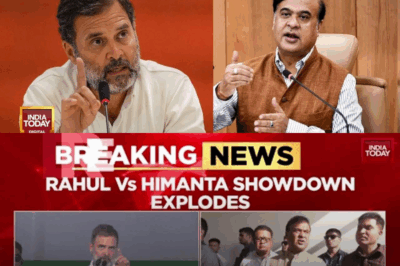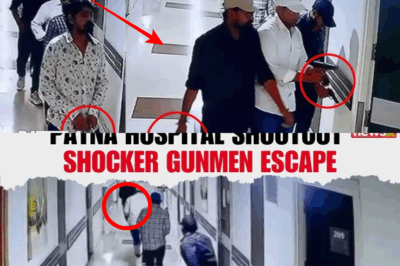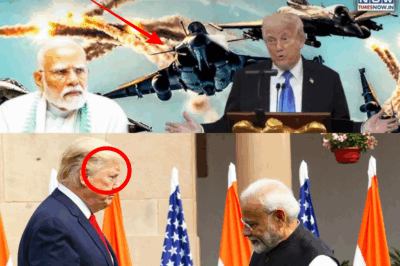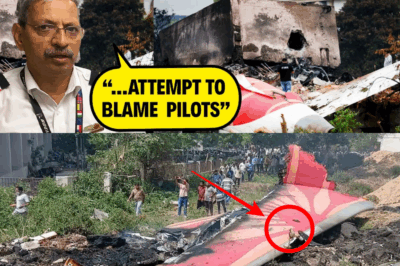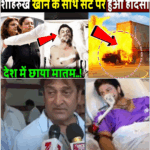Bodies, Bones, and Silence: The Haunting Questions of Mass Burials in Dharmasthala
Dharmasthala, a serene holy town in Karnataka, revered for its ancient Manjunatha Swami Temple and spiritual sanctity, now finds itself shrouded in disturbing allegations of mass burials—casting shadows on its sacred reputation and stirring a storm of suspicions and unanswered questions.
.
.
.
Last week, a whistleblower, a sanitation worker from the temple, shocked the nation by claiming that, over several years, he was ordered to bury numerous unidentified bodies in secrecy. His chilling testimony included exhuming skeletal remains, some accompanied by belongings, that were handed over to police investigators. With an FIR filed and formal statements recorded, official probes began, but the full truth remains elusive, buried beneath layers of silence and denial.
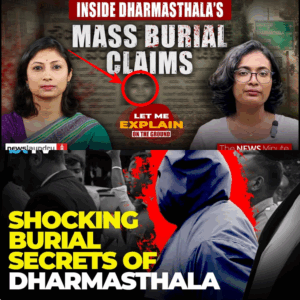
Local authorities claim that these bodies mainly belonged to people who died by suicide, brought to Dharmasthala for ‘spiritual peace.’ The Panchayat vice president, Shrinivasa Rao, insists all unclaimed bodies are documented properly, dismissing accusations of foul play as baseless and warning the whistleblower against unauthorized burial, indicating a possible suppression attempt.
Yet, experiences of disappearances remain rife. Historical accounts from the Karnataka Assembly cite cases of young men vanishing mysteriously, with families facing intimidation when seeking justice. One poignant case is that of Ananya Bhatt, an MBBS student who went missing from Dharmasthala decades ago, epitomizing the long-standing fears.
Local media, particularly Kannada mainstream channels, have largely avoided this explosive topic. Journalists and editors admit the story’s sensitive nature risks backlash, legal challenges, and loss of revenue. Gag orders reportedly connected to powerful temple-linked figures further stifle investigative journalism.
On the ground, the atmosphere is tense—a blend of hope, resignation, and growing demand for accountability. Activists like Mahesh Shetty, founder of Rashtriya Hindu Jagarana Vedike, champion justice for victims such as Sowjanya, a rape and murder victim whose killers remain at large. Sowjanya’s movement united diverse political and ideological factions, highlighting the communal desire for truth.
The Karnataka Women’s Commission chairperson, Naga Lakshmi Choudhary, questions the number of women and students missing over two decades, the progress on cases of unnatural deaths and assaults, and the efficacy of law enforcement.
The absence of a dedicated police station in Dharmasthala until 2016 complicated reporting and investigations. The current probe suffers from bureaucratic hurdles and lack of witness protection, as the sanitation worker and his legal team faced negligence and intimidation, hampering progress.
As exhumations are poised to begin, there lies a grim task ahead for authorities: unraveling decades of silence, accounting for missing souls, and revealing a possible systemic failure that allowed such dark secrets to fester.
For the families waiting anxiously for closure, Dharmasthala’s buried bones represent not just physical remains but a haunting call for justice—an echo from the past demanding to be heard.
This story is a testament to the power of perseverance, courageous journalism, and the need for transparent governance to restore faith in institutions meant to protect the vulnerable.
News
BREAKING: World Championship of Legends India vs Pakistan MATCH CANCELLED—Fans OUTRAGED, Here’s Why!
Political Turmoil Forces Cancellation of Pakistan vs India Match at World Championship of Legends In a stunning blow to cricket…
Rahul Gandhi Drops BOMBSHELL JAIL Warning to Assam CM Himanta Sarma—What He Said Will Shake Political Circles!
Rahul Gandhi’s Stunning Jail Warning to Assam CM Himanta Sarma Sparks Fierce Political Battle Assam is witnessing a new level…
Shocking Hospital Hit! Gunmen Storm Indian ICU, EXECUTE Convict in Cold Blood—Escape Like Ghosts!
Shock and Horror: Gunmen Execute Convict Inside Indian Hospital ICU and Escape Effortlessly In a brazen and chilling act of…
Trump’s Explosive New Claim: ‘5 Indian Jets Shot Down’—Congress DEMANDS PM Modi Break Silence NOW!
Political Tempest: Rahul Gandhi Questions PM Modi Over Trump’s ‘5 Jets Shot Down’ Claim Amid India-Pakistan Tensions The political landscape…
Exclusive Aviation Expert Reveals SHOCKING Mathematical Calculation Behind Air India Plane Crash — What REALLY Happened?
Exclusive Analysis: Aviation Expert’s Mathematical Breakdown of Air India 171 Crash Raises Crucial Questions The tragic crash of Air India…
India’s Defence Breakthroughs That Will Change Warfare Forever — Su-57 Laser Weapon, Kalam Supersonic UAV & More!
India’s Military Modernization: From Runway Repairs to Cutting-Edge Aerospace Innovations Following recent Indian missile strikes, Pakistan’s Seroda Air Base has…
End of content
No more pages to load


